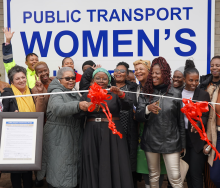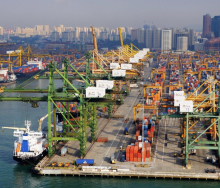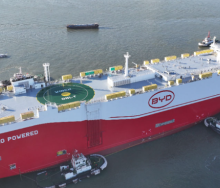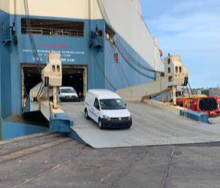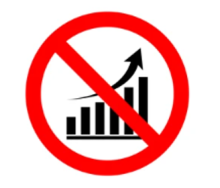The South African Ports Regulator (SAPR) has granted an inflation-related 4.4% average tariff increase for the services rendered to port users by the Transnet National Ports Authority (TNPA) for the 2025/26 period.
SAPR CEO, Mukondeleli Johanna Mulaudzi, announced the regulator’s official record of decision in a meeting with port stakeholders and the media on Friday.
This comes after the ports authority submitted a tariff application requesting an average tariff increase of 7.90% for the period April 1, 2025 to March 31, 2026, along with indicative tariff increases of 18.61% for the period April 1, 2026 to March 31, 2027 and 2.52% for April 1, 2027 to March 31, 2028. The application was filed on August 1, 2024.
Mulaudzi said the regulator had come to its decision after reviewing the application, stakeholder submissions and the updated inflation data highlighted in National Treasury’s Medium-Term Budget Policy Statement (MTBPS), as well as applying its tariff methodology and strategy.
She said the regulator had decided that an appropriate overall weighted average tariff increase of 4.4% should be applied for the 2025/6 period.
This will be differentiated as follows:
• Marine services and related tariffs (Sections 1-8 of the Tariff Book, excluding Section 7 that deals with cargo dues) are to increase by 6.15%.
• All cargo dues categories are to increase by 3.40%, except for:
• Dry bulk imports and exports, which are to increase by 4.00%; and
• Tariffs for empty containers on deep sea and transhipment will be equalised to coastwise tariffs.
All marine tariffs (Sections 1-8 of the Tariff Book, excluding Section 7 that relates to cargo dues) for existing commercial South African-flagged vessels, as well as commercial vessels registered in South Africa from 2019/20, will receive a 30% discount, applicable year-on-year until reviewed by the regulator.
“All licence fees for port activities as per Section 5 of the Tariff Book will continue to be discounted by 30%. Additionally, all licence fees (tariff) applicable per port for the tariff year 2025/26 can continue to be paid in equal instalments on an annual basis over the period of the licence,” she said.
For the 2025/26 tariff year, a reduction in port dues will continue to apply to vessels not engaged in cargo working for the first 30 days only; bona fide coasters; passenger vessels and small vessels classified when visiting a port other than their registered port.
Vessels in port for longer than 30 days, not engaged in cargo working or undergoing repairs, will incur a 20% surcharge on the incremental fee of port dues. Additionally, a 60% reduction will be granted to vessels calling for the sole purpose of taking on bunkers and/or stores and/or water or a combination of all three, provided the vessel’s entire stay does not exceed 48 hours.
She said the regulator supported TNPA’s request for a 10% reduction in port dues for liquid bulk tankers in possession of a Green Award Certification.
Mulaudzi said the regulator had taken cognisance of the volatility and fluctuations on the components of the required revenue which are driven by economic factors, deviation from projected and actual volumes, and over/under-recovery of revenues.
“A key component of this tariff assessment was the inflation number. The MTBPS expects inflation to stabilise around the midpoint of the (South African) Reserve Bank’s 3-6% target,” she said.
“The MTBPS figure suggests that the country has entered a transitional period to a low inflation trajectory. While low inflation is favourable in increasing disposable incomes for households, in the adopted rate of return regulatory methodology, low inflation increases the real return of capital. In an environment where volume growth is also muted, low inflation results in increased tariffs in the transitional period,” she said.
The regulator had opted to use the Excessive Tariff Increase Margin Credit (ETIMC) to soften the switch from a high to low inflation phase, she added.
“Going forward, the low inflation phase allows port users to afford increasing tariffs which will be necessary for the NPA’s investment programme.”
Malaudzi said the regulator would use R225 million of the ETIMC to mitigate transition to the low inflation phase and smooth tariffs for the 2025/26 period.
The authority has approved operational expenditure of R6.854bn, including group overhead costs.
“The regulator disallowed the difference between approved operational costs and actual costs incurred in FY 2023/24, amounting to R185m as it believes that the authority ought to control operational costs and over expenditure should not be passed onto port users,” Malaudzi said.
She added that the “insightful disallowance” had also stemmed from the posting of fruitless and wasteful expenditure of R12m.
“Reported irregular expenditure of approximately R169m has been noted in the authority’s information. While the Authority has substantiated the causes of the expenditure and reported that no financial losses were suffered, the regulator will follow up to establish the outcomes of the determination tests to decide whether any of this amount should be clawed back in the next tariff application,” Malaudzi said.
The approved tariff adjustment amounts to revenue of R15 318m as opposed to the R15 663m applied for.
“This will be recovered from R10 292m in Marine Services and Cargo Dues, and R5 026m in Real Estate Revenue,” she said.
Malaudzi added that the regulator had noted “reports of continued deterioration of port performance caused by lack of refurbishment and investments in equipment by terminal operators”.
“South African ports continue to rank poorly in performance indicators compared with other ports regionally and globally, resulting in increased costs for shipping lines, cargo owners and ultimately South African consumers,” she said.
“The deteriorating port efficiency levels, measured through the Weighted Efficiency Gains from Operations (WEGO), have resulted in a loss of R217m. The Regulator will continue to monitor port performance and efficiency levels through the stakeholder engagement process.”
Read the full Record of Decision at www.portsregulator.org. The Tariff Book will be published by March 31.

